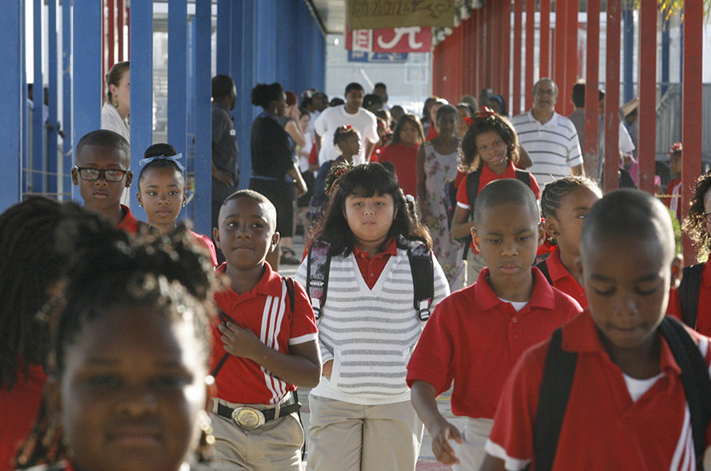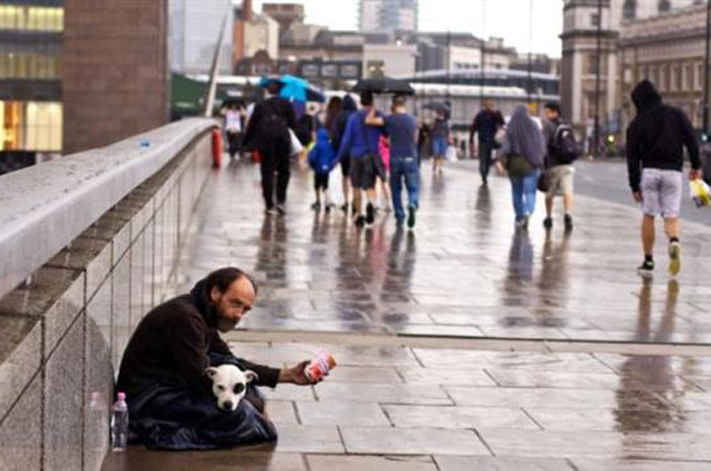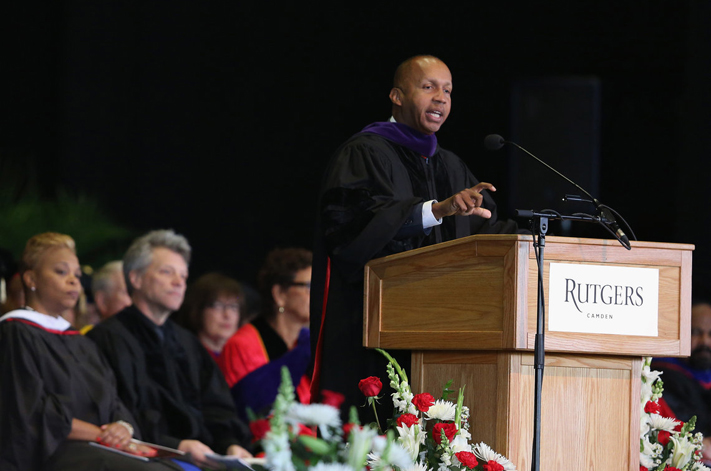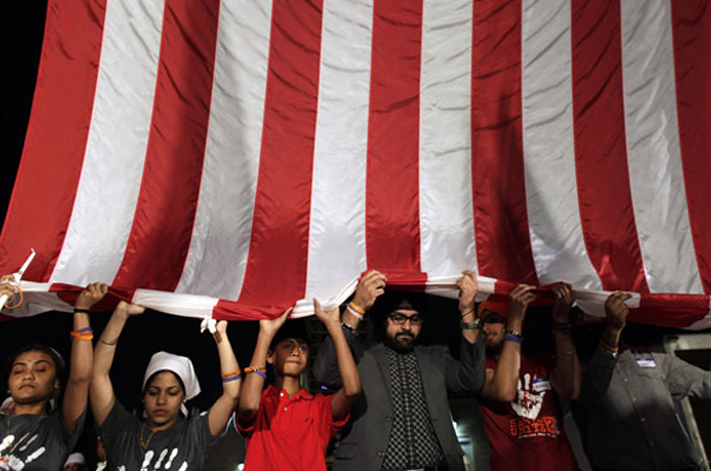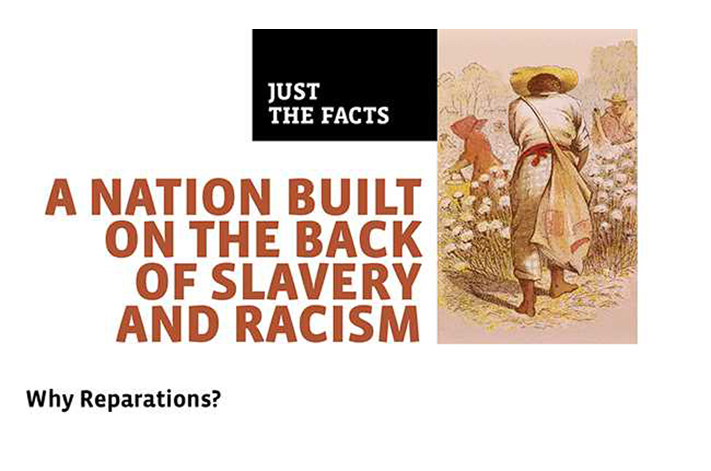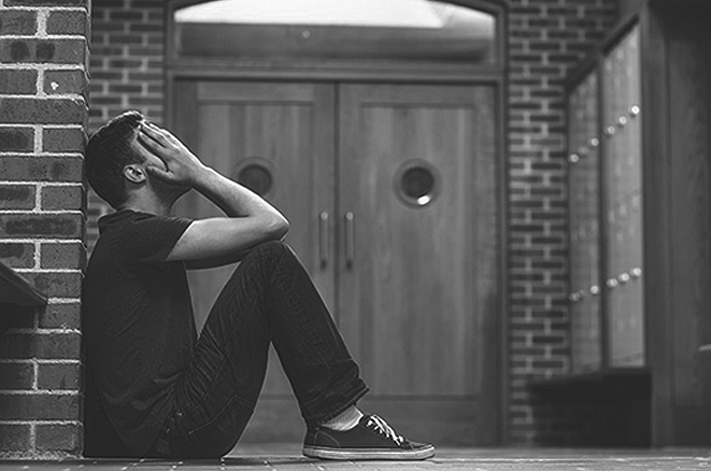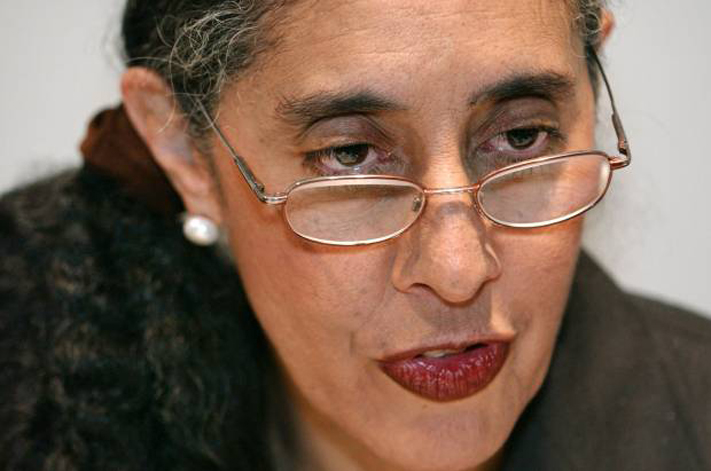Project Description
'There will always be individuals and societies that turn against their children, breaking the natural order Aristotle described two and a half millennia ago. . . . Regardless of their individual motivations, they all rely upon a societal prejudice against children to justify themselves and legitimate their behavior.'
~ Psychoanalyst Elisabeth Young-Bruehl, 'Childism: Confronting Prejudice Against Children'
Piper Kerman, author of Orange Is the New Black writes: 'Burning Down the House by Nell Bernstein reveals a shocking truth: what adults do to children behind the walls of America's juvenile prisons is criminal. If we want to change the United States' senseless addiction to incarceration, the best possible place to start is transforming how our justice system treats our children. This book shows just how that can be done.'
The following is an excerpt from Chapter Five, 'The Fist and the Boot: Physical Abuse in Juvenile Prisons' of Burning Down the House: The End of Juvenile Prison Chapter One too is quite the read, as is the book in its entirety. — Featured Photographs by Photographer, Researcher, and Professor, Richard Ross, the photographs are part of his Juveniles In Justice. portfolio series
Now he found himself forced to his knees, hands cuffed behind his back, stripped to his boxers, one in a long row of boys in the same supplicant pose. They would be required to hold this position for two full weeks, their only respite a daily three-hour block allotted for sleep and a quick meal—a cheese sandwich, milk, and an egg.
Darren had just been transferred from one facility to another when a large-scale fight broke out. No effort was made to distinguish bystanders from those who had joined in. Witness, participant, instigator—it made little difference to those doling out punishment, it seemed to Darren, who had been through this kind of collective consequence before during the five years he ‘d spent locked up. Once individuality has been successfully eradicated via uniforms, strict schedules, regulation of daily activity, restricted contact with the outside world, and prison-supplied numbers supplanting given names, punishing the many for the sins of the few comes to seem logical, if not essential to the all-important end of “maintaining order.”
So it was that all the boys in Darren’s unit were brought to the gymnasium, stripped to their underwear, and ordered to their knees. They would remain in that posture, bound together in a long row, until the guards chose to release them. Silence was strictly enforced.
Darren was a college student when he spoke with me about his long sojourn through the California Youth Authority (CYA). Earnest and deliberate, he chose his words as carefully as he did his attire—a zip-top blue sweater and matching wool knit cap, a carved silver stud anointing each ear, and the hint of a goatee framing a handsome brown face. There was no apparent anger in his tone, even when he described the worst of the abuses. His voice simply dropped, infused with a quiet, contemplative sorrow.
It was difficult to imagine this poised young man in the supplicant, dehumanized position he had described to me. But formal investigations into conditions at the CYA (now known as the Division of Juvenile Justice) confirmed Darren’s account and worse.
During Darren’s weeks on his knees, the silence made the banter of the guards difficult to ignore. “They talk and chat and giggle and joke,” he recalled, a slight edge creeping into his otherwise even manner, “and you just sit there. I was on my knees for two weeks.”
“I lost my religion in there,” Darren said, his even tone breaking for an instant. “I just stopped believing.”
Prostrate before grown men to whom he might as well have been invisible, listening to the guards laugh and joke among themselves as their charges knelt before them, visibly suffering, Darren silently sought answers. How can the people here do the the things they do to children? he asked the heavens. No answer was forthcoming.
Abuse of the young inside state-run juvenile prisons is both rampant and extreme. A federal survey published in 2010 found widespread abuse and maltreatment in America’s youth corrections facilities. More than a third of youth in secure corrections facilities or camp programs reported that staff used force unnecessarily, and 30 percent said that staff placed youth into solitary confinement or locked them up alone as discipline. About half had experienced some kind of group punishment, as Darren described, and half said staff applied punishment unfairly. Fear of abuse was equally pervasive: 38 percent of youth said they feared being physically attacked by staff or other youth. Twenty-five percent feared attack from another youth, and 22 percent were afraid of attack from a staff member. Many lived in fear of both.
In the context of the juvenile prison, the term “abuse” takes on multiple meanings. The following are just a sample of incidents that have come to light in recent years.
- In Florida, a three-hundred-pound guard crushed a twelve-year old boy with his body, suffocating the sixty-five-pound child to death.
- In California, groups of correctional officers slammed handcuffed boys face-first into walls or set attack dogs on them, often in full view of security cameras.
- In Louisiana, guards assaulted sleeping children, or entertained themselves by pitting boys in fights against each other, leaving them with broken jaws, fractured eye sockets, and an array of other injuries.
- In New York, children were restrained with such force that they wound up with concussions, missing teeth, spiral fractures, and other injuries. While physical restraint is intended only for situations where a young person poses a danger, these harsh examples were sometimes the result of affronts as minor as taking an extra cookie or laughing against orders. “Workers forced one boy, who had glared at a staff member, into a sitting position and secured his arms behind his back with such force that his collarbone was broken.”
- In Georgia, guards assaulted children who were anemic, injured, mentally disabled, and as young as nine. When one boy collapsed during a punishing exercise regime, a supervisor broke his arm. A boy who talked in line was punched in the ear so hard that his eardrum was punctured.
- In Mississippi, guards ripped the clothing from suicidal girls, then hog-tied them, naked, and tossed them into solitary. They also shackled girls to poles and forced them to run in hot weather carrying logs. Those who threw up from the heat and the strain were forced to eat their own vomit.
- In Arkansas, young people were left naked in solitary with the air-conditioning turned on high, or hog-tied and set outside at night in freezing weather.
In the absence of a consistent reporting mechanism, the best source of information about abuse behind bars often comes from litigation initiated by family members, advocacy groups, or the U.S. Department of Justice. The federal entity charged with enforcing the Eighth Amendment (which forbids cruel and unusual punishment), the Department of Justice is responsible for investigating allegations of abuse behind bars and can sue those jurisdictions in which abuse is egregious enough to test constitutional limits.
A 2011 report from the Annie E. Casey Foundation includes an overview of successful civil rights suits across the country. Abuse is pervasive throughout the nation’s juvenile facilities, author Richard Mendel concludes, with documentation of “systemic violence, abuse, and/or excessive use of isolation or restraints” in thirty-nine states plus Washington, D.C., and Puerto Rico, going back to 1970.
In each of these instances, “states have been identified not for one or a handful of isolated events, but for a sustained pattern of maltreatment,” according to the Casey report. Fifty-seven lawsuits, many brought by the Department of Justice, have turned up enough evidence of violence, abuse, and other violations to require court-imposed remediation. The thousands upon thousands of pages of documentation that result from these myriad investigations leave little question that the punishment doled out inside our nation’s juvenile prisons is cruel. But as evidence of widespread abuse turns up in state upon state, decade after decade, it becomes increasingly difficult to view it as “unusual.”
In New York, a supervisor with that state ‘s Office of Children and Family Services, which oversees both the delinquency and dependency systems, said young people sometimes returned from upstate juvenile facilities with bruises, contusions, or even broken bones. Each time, she would pick up the phone and report these instances of alleged child abuse to a branch of the same agency suspected of inflicting them. Only a handful of states, it turns out, have not been determined to have systematically brutalized the youth in their care. A review of all fifty states found only eight where there was not conclusive evidence of system-wide mistreatment.
Reading the results of Department of Justice investigations or class action lawsuits—catalogues of brutality running on for pages—is a painful experience. But there is also something bracing about the bald exposure of abuses behind bars. Surely, one imagines, once these horrors are exposed both in the press and at the highest levels of our legal system, something will be done about them. Reforms will be instituted, the children made safe.
Those who author reports on abuse in juvenile prisons tend to foster this reformist faith, ending the most chilling investigation with an optimistic list of suggested reforms. The language ranges from academic to outraged to crisply legalistic, depending on the authors, but the recommendations themselves are generally quite similar: conduct further inquiries, form new committees, consult experts, draft protocols, hold trainings, and the like. Beneath these procedural suggestions lies a single mandate: quit beating up the children.
Federal law and a number of court decisions have made it clear that incarcerated youth do not forfeit their human rights along with their liberty. Yet as lawsuit follows lawsuit and consent decrees pile up, abuse remains endemic to our nation’s juvenile prisons. It has persisted for decades, despite investigations, expos.s, admonitions, and court orders; despite public displays of outrage and official commitments to change.
No matter how vehemently we profess ourselves “scandalized” when another investigation brings new abuses to light, the seemingly gratuitous cruelty of captor toward captive is so widespread, and so long-standing despite multiple reform efforts, that it raises a troubling question: is it even possible to eradicate the abuses that occur with such regularity when large numbers of vulnerable young people are held captive far from the public eye? Or is there something inherent to this particular structure that makes such abuses inevitable?
From “chemical restraints” to shield-bearing “extraction teams” to age-old tools like the fist and the boot, today’s incarcerated youth face a range of mechanisms of assault that taxes the imagination. The restraint chair, for example, may sound like an artifact from a medieval dungeon, but it is used in juvenile facilities to this day.
Ricardo spent twenty-one months in a Massachusetts Department of Youth Services facility. There, he was strapped into the device—a high-backed, padded contraption fitted out with belts, cuffs, and similar devices—in order, he was told, to address his “anger problems.”
“They put you in a fucking room by yourself with the chair in the middle . . . a big-ass room with one chair, and you are strapped down to it. . . . They strap you down and sit you like this”—Ricardo stooped to demonstrate the pinioned position that seemed to be imprinted in his muscle memory—”and you have to sit there for five to six hours by yourself.”
“They strap you down,” he repeated, his voice rising with a fury the passage of time seemed not to have diminished.
Copyright 2014 by Nell Bernstein. The excerpt originally appeared in Burning Down the House: The End of Juvenile Prison published by The New Press here with permission.
Nell Bernstein is the Author of Burning Down the House, from The New Press, and All Alone in the World (The New Press), a Newsweek “Book of the Week.” She is a former Soros Justice Media Fellow and a winner of a White House Champion of Change award. Her articles have appeared in Newsday, Salon, Mother Jones, and the Washington Post, and TruthOut, among other publications. She lives in Albany, California.
Richard Ross is a photographer, researcher and professor of art based in Santa Barbara, California. Ross has been the recipient of grants from the National Endowment for the Arts, the Annie E. Casey and MacArthur Foundations. Ross was awarded both Fulbright and Guggenheim Fellowships. His most recent work, the — In Justice series, turns a lens on the placement and treatment of American juveniles housed by law in facilities that treat, confine, punish, assist and, occasionally, harm them. Two books and traveling exhibitions of the work continue to see great success while Ross collaborates with juvenile justice stakeholders, using the images as a catalyst for change.
This piece was reprinted by EmpathyEducates with permission or license. We thank the Author, Nell Bernstein for her kindness, awareness, research and for the lesson. We are extremely grateful for Photographer Ricahrd Ross’ strong voice and visual presence. We cannot begin to express our abundant appreciation for each of the two and the many vital conversations each inspires.
'There will always be individuals and societies that turn against their children, breaking the natural order Aristotle described two and a half millennia ago. . . . Regardless of their individual motivations, they all rely upon a societal prejudice against children to justify themselves and legitimate their behavior.'
~ Psychoanalyst Elisabeth Young-Bruehl, 'Childism: Confronting Prejudice Against Children'
Piper Kerman, author of Orange Is the New Black writes: 'Burning Down the House by Nell Bernstein reveals a shocking truth: what adults do to children behind the walls of America's juvenile prisons is criminal. If we want to change the United States' senseless addiction to incarceration, the best possible place to start is transforming how our justice system treats our children. This book shows just how that can be done.'



